-
Aadhaar OTP Must for Tatkal Bookings from July 15: Railways Issues New Rules
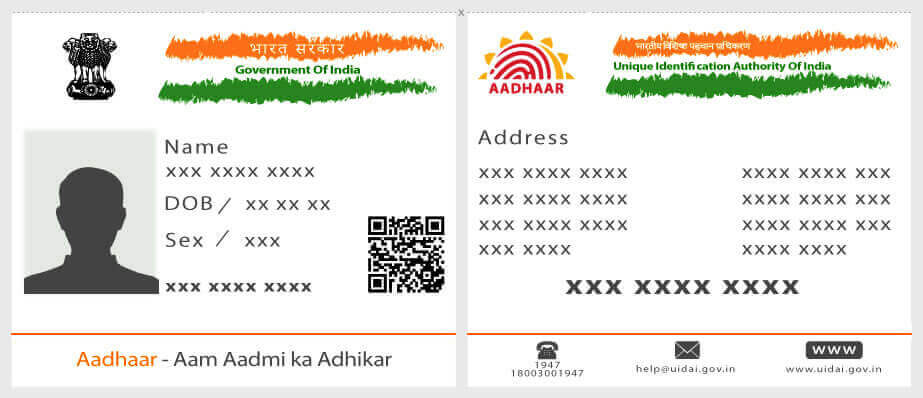
Category: Government Updates | Public Services | Railways
Date Published: June 7, 2025
Published by: IndianCurrentAffairs.com
🔔 Introduction: Major Update for Tatkal Ticket Bookings
The Indian Railways has introduced a major change in the Tatkal ticket booking system. Starting July 15, 2025, all passengers booking Tatkal tickets through the IRCTC online portal will be mandated to verify their identity using Aadhaar OTP authentication. This move is aimed at curbing fraudulent bookings and ensuring fair access for genuine travelers.
The decision was officially announced by the Ministry of Railways and will be implemented across all classes including AC, Sleeper, and Executive Class Tatkal bookings.
🧾 What Is the New Rule?
From July 15 onwards:
- Users must link their Aadhaar number with their IRCTC account.
- During Tatkal ticket booking, users will receive an OTP (One-Time Password) on the mobile number registered with Aadhaar.
- The booking process will only proceed after successful OTP verification.
This Aadhaar-based verification will be mandatory only for Tatkal bookings. General, Premium Tatkal, and other reservation categories remain unchanged as of now.
🎯 Objective Behind the Move
The Railways has introduced this measure with the primary objective of preventing misuse of the Tatkal quota. Several issues prompted this change:
- Automated software abuse by touts and agents
- Fake user IDs created to hoard tickets during the Tatkal window
- Duplicate bookings using multiple credentials
- High cancellation rates due to speculative bookings
By implementing Aadhaar OTP verification, the authorities aim to:
- Ensure genuine identity verification
- Prevent bulk or bot-based bookings
- Improve transparency and fairness for individual passengers
🧠 How to Get Ready for the Change?
If you’re a frequent Tatkal traveler, here’s how you can prepare:
- Log in to your IRCTC account
- Navigate to “My Profile” and select “Aadhaar KYC”
- Enter your 12-digit Aadhaar number
- You’ll receive an OTP on the mobile number linked with Aadhaar
- Submit OTP to complete the process
Post July 15, only IRCTC-verified users with Aadhaar linkage will be allowed to book Tatkal tickets online.
📊 Impact on Travellers
This change is expected to bring mixed reactions:
✅ Positive Impacts:
- Better availability of Tatkal tickets for genuine passengers
- Elimination of tout networks and fraud systems
- Improved user experience with secure booking methods
❌ Challenges:
- Users without Aadhaar or mobile linkage may face difficulties
- Elderly or rural passengers might need assistance during the process
- Increased pressure on Aadhaar authentication servers during peak hours
To mitigate these issues, IRCTC is setting up helplines and Aadhaar-assistance desks at key railway stations.
🇮🇳 Digital Push in Public Transport
This new Aadhaar OTP mandate is part of a larger digital transformation initiative by Indian Railways under the Digital India framework. Similar measures have already been implemented in:
- Online subsidy tracking (LPG, Fertilizers)
- KYC for mobile SIM and bank accounts
- UPI and biometric-based travel pass validations in metro systems
By integrating Aadhaar with railway bookings, the government aims to enhance digital accountability and travel safety.
📅 Key Dates to Remember
- Effective Date: July 15, 2025
- Applicable To: Tatkal bookings on IRCTC only
- Requirement: Aadhaar number linked with IRCTC + OTP verification
🔚 Conclusion
The Aadhaar OTP requirement for Tatkal tickets is a proactive step by Indian Railways to address long-standing concerns around ticketing fraud and passenger inconvenience. While it adds an extra verification step, it also promises a more secure, transparent, and efficient booking system.
Stay informed and prepare in advance to avoid last-minute hassles during Tatkal hours.
For more updates on policy changes, exam-ready news, and India’s governance reforms, visit IndianCurrentAffairs.com regularly.
-
World Day Against Child Labour 2025: Progress Is Clear, But There’s More to Do

Category: Social Issues | International Observance | Child Rights
Date Observed: June 12, 2025
Published by: IndianCurrentAffairs.com
📅 Introduction: A Global Stand for Children
Every year on June 12, the world comes together to observe World Day Against Child Labour—a day dedicated to raising awareness and intensifying the global fight to eliminate child labour in all its forms. In 2025, the focus of the campaign gains deeper relevance with the theme:
“Progress is clear, but there’s more to do: let’s speed up our efforts!”
This year’s theme is both a celebration of the strides made so far and a call to action—urging governments, organizations, and citizens to accelerate the progress as the 2025 deadline under Sustainable Development Goal (SDG) 8.7 rapidly approaches.
🌍 Understanding the Global Scenario
According to recent reports from the International Labour Organization (ILO) and UNICEF, nearly 160 million children—1 in 10 worldwide—are still engaged in child labour. While the number of children in hazardous jobs has declined slightly in the last five years, economic challenges, armed conflict, pandemics, and climate change continue to stall momentum.
Key Global Insights:
- Africa leads with the highest incidence, followed by Asia-Pacific.
- Agriculture, manufacturing, mining, and domestic work are the most child-labour-intensive sectors.
- The fastest-growing concern is urban informal labour and child trafficking.
🇮🇳 Child Labour in India: A Dual Story
India, with its massive youth population, has made measurable progress through legislative reforms and public awareness campaigns. However, child labour persists, particularly in:
- Rural areas with low literacy
- Unorganized sectors such as construction, street vending, and textiles
- Urban slums, where economic pressure forces families to send children to work
Key Government Initiatives:
- Child Labour (Prohibition and Regulation) Amendment Act, 2016
- National Child Labour Project (NCLP)
- School-based interventions under Samagra Shiksha Abhiyan
- Integration of rescued children into formal education
Despite these steps, enforcement remains weak in remote regions, and the impact of inflation has reversed gains in some states.
🎯 Why the 2025 Theme Matters
The 2025 theme—“Progress is clear, but there’s more to do: let’s speed up our efforts!”—emphasizes the urgency of collective action. While legal frameworks are in place, there’s a growing need for:
- Cross-sector collaboration between government, civil society, and private enterprises
- Improved tracking systems for at-risk children
- More budget allocation for rehabilitation and education
- Technology-driven solutions for identifying and reporting violations
The message is simple: the world has made progress, but the clock is ticking. Action must now outpace promises.
🎓 The Role of Education and Awareness
Education continues to be the most powerful tool against child labour. Programs that provide free and compulsory education, nutritious meals, transport facilities, and scholarships have helped bring children back to school.
However, awareness must go beyond schools. Media, influencers, and community leaders play a vital role in:
- De-stigmatizing school dropouts
- Highlighting child success stories
- Promoting vocational training and digital literacy
- Encouraging parents to value long-term benefits over short-term wages
🛠️ What Needs to Happen Next
For India and the world to achieve the goal of eliminating child labour by the end of 2025, as outlined in SDG 8.7, stakeholders must:
- Strengthen grassroots enforcement
- Support rural families with livelihood schemes
- Empower women, as maternal education directly correlates with reduced child labour
- Involve youth as ambassadors against child labour
🔚 Conclusion: A Call to Accelerate
As we observe World Day Against Child Labour 2025, it’s clear that progress has been made—but it’s not enough. The global community must now accelerate its commitment and ensure that no child is left behind in the pursuit of safety, education, and dignity.
For regular updates on national campaigns, policies, and education-driven solutions, visit IndianCurrentAffairs.com — your source for verified, impactful, and exam-relevant news.
-
India Slips to 131st Rank in WEF Gender Gap Index 2025
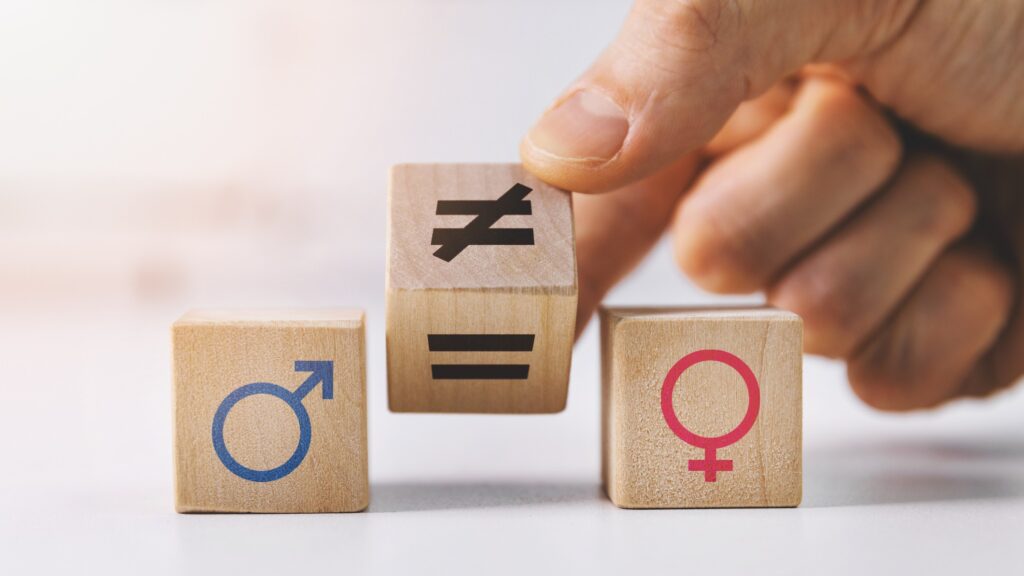
Category: Current Affairs | Social Development | Gender Equality
Date: June 2025
Published by: IndianCurrentAffairs.com
🔍 Overview of the WEF Gender Gap Index 2025
The World Economic Forum (WEF) has released its Global Gender Gap Report 2025, and India’s position has dropped to 131st out of 146 countries, signaling persistent gender disparities across economic, political, educational, and health dimensions. Despite incremental improvements in specific sectors, India continues to lag behind its South Asian neighbors, raising urgent concerns about the country’s progress in ensuring gender equality.
📊 What is the Gender Gap Index?
The Gender Gap Index, first introduced by the WEF in 2006, ranks countries based on their performance in closing the gender gap across four key areas:
- Economic Participation and Opportunity
- Educational Attainment
- Health and Survival
- Political Empowerment
Each of these categories is scored between 0 and 1, where 1 represents full gender parity.
🇮🇳 India’s Performance in Key Indicators
Let’s take a look at how India fared across the four key parameters:
🏦 Economic Participation and Opportunity
India continues to struggle in this segment, ranking 145th. The female labor force participation rate remains low, and the gender pay gap is still a major concern. Women occupy fewer leadership roles and face systemic barriers to equal pay and employment opportunities.
🎓 Educational Attainment
India shows a relatively better score in educational attainment, standing at 109th, thanks to expanding access to primary and secondary education. However, dropout rates for girls in rural areas and gender biases in higher education continue to hinder progress.
🏥 Health and Survival
Ranked at 142nd, India’s performance in the health and survival category remains among the poorest globally. Skewed sex ratios at birth and unequal access to healthcare contribute to this alarming statistic.
🏛️ Political Empowerment
India ranked 65th in political empowerment, largely due to the presence of women in top leadership roles like the Lok Sabha and various state assemblies. However, the percentage of women in ministerial positions remains limited, and grassroots political representation of women still requires attention.
🌍 How India Compares Globally and Regionally
India’s 131st rank places it behind many of its neighboring countries:
- Bangladesh: 99th
- Nepal: 115th
- Sri Lanka: 122nd
- Bhutan: 127th
Globally, Iceland retained the top spot for the 15th consecutive year, followed by Finland, Norway, and New Zealand.
📉 Decline from Previous Year
In 2024, India ranked 127th. The slip to 131st in 2025 reflects the lack of major policy implementation and societal shifts needed to address deep-rooted inequalities. Experts believe that while schemes such as Beti Bachao, Beti Padhao and POSHAN Abhiyan have made localized impacts, a wider structural overhaul is required to bridge the gender gap effectively.
💡 Expert Opinion
Social scientists and gender rights advocates stress that gender parity is not just a human rights issue but also an economic one. According to a report by the McKinsey Global Institute, advancing women’s equality could add $700 billion to India’s GDP by 2030. The WEF’s report serves as a reminder that empowering women is essential for sustainable development and economic growth.
🛤️ What Needs to Be Done?
To improve its global ranking, India must:
- Increase female workforce participation through safer workspaces, childcare support, and equal pay.
- Strengthen legal frameworks to combat gender-based violence and discrimination.
- Enhance healthcare access for women and address nutrition gaps.
- Invest in leadership training and political representation for women.
- Address cultural stereotypes that hinder gender equality from the grassroots level.
🔚 Conclusion
India’s slip to the 131st position in the WEF Gender Gap Index 2025 is a call to action. While there have been notable efforts at policy and institutional levels, the ground reality remains stark. Gender equality is a long journey, and India must intensify its efforts across sectors to ensure a more inclusive and equitable future.
For more updates on India’s development and socio-political landscape, visit IndianCurrentAffairs.com regularly.
-
Oscar Piastri Dominates the Spanish Grand Prix 2025: A Landmark Victory

Category: Sports News | Formula 1 | Indian Current Affairs
Introduction: A Breakthrough Moment for Oscar Piastri
In a defining moment of the 2025 Formula 1 season, Australian driver Oscar Piastri claimed a dominant victory at the Spanish Grand Prix, held at the iconic Circuit de Barcelona-Catalunya. This race marks one of the most commanding performances of the season and further establishes Piastri as a formidable contender in this year’s championship title race. Driving for McLaren, Piastri’s win was not just a personal milestone—it was a showcase of precision, consistency, and flawless race strategy.
Pole to Podium: Flawless Execution by McLaren
Starting from pole position, Oscar Piastri demonstrated complete control over the race. Right from the first lap, he set the pace and never relinquished the lead. His lightning-fast start allowed him to escape the midfield chaos and build a comfortable gap early on. McLaren’s car setup suited the high-speed corners and long straights of the Spanish circuit, giving Piastri the perfect tool to convert his pole into victory.
McLaren’s strategic team decisions, including optimal tire choices and perfectly timed pit stops, further solidified the race for the Australian driver. With consistent lap times and no on-track errors, Piastri’s victory came as a testament to his growth as a top-tier F1 driver.
Lando Norris Completes McLaren’s Dream Finish
Lando Norris, Piastri’s teammate, finished in second place to deliver a perfect one-two finish for McLaren. This strong showing reflects the team’s remarkable improvement in 2025. Norris stayed close to Piastri during the first half of the race, but team orders and tire management strategies ensured both drivers secured the maximum possible points without unnecessary risks.
Such consistent team performances are crucial in the Constructors’ Championship, where McLaren is now closing the gap on leaders like Red Bull and Ferrari.
Verstappen Falters, Leclerc Takes Advantage
Defending world champion Max Verstappen had a challenging weekend. Despite starting in the top five, he struggled with tire degradation and race pace. A mid-race incident involving George Russell earned him a ten-second time penalty, pushing him down the grid and out of podium contention. Verstappen ultimately finished in tenth place, his lowest of the season, raising concerns for Red Bull as rivals catch up.
Charles Leclerc of Ferrari capitalized on the opportunity, finishing third. Leclerc’s clean and steady race helped him climb the rankings and earn a valuable podium finish. This result was vital for Ferrari in their fight for second place in the Constructors’ table.
Midfield Standouts: Hülkenberg and Alonso Impress
The Spanish Grand Prix wasn’t just about the front-runners. The midfield also delivered excitement. Nico Hülkenberg drove a brilliant race to finish fifth, one of his best results this season. Meanwhile, Fernando Alonso, racing in front of his home crowd, put in a determined performance to finish ninth and earn his first points of the 2025 season.
These results show how unpredictable the midfield battles are becoming, with experienced drivers still able to outperform younger talents under pressure.
Championship Implications and Season Outlook
Piastri’s win reshapes the Drivers’ Championship landscape. He now leads the standings, ahead of Norris and Verstappen. With momentum on his side and confidence growing, Piastri is being hailed as a serious championship contender. McLaren’s current form suggests they are no longer outsiders—they are right in the mix to challenge Red Bull and Ferrari for both titles.
The Spanish Grand Prix has also raised questions for Red Bull, who appeared vulnerable for the first time this season. With several races still to go, the championship is wide open.
Final Thoughts
Oscar Piastri’s Spanish Grand Prix victory is more than just another race win—it marks the arrival of a new superstar in Formula 1. His calm, calculated, and commanding performance signals a shift in the competitive balance of the sport. As the season progresses, all eyes will remain on McLaren and their rising champion.
For more detailed sports news and updates across India and the world, visit IndianCurrentAffairs.com.
-
Canara Bank Removes Minimum Balance Rule for All Savings Accounts

Category: Indian Banking | Financial News | Financial Inclusion
Date: June 2025
🏦 Major Banking Update: Canara Bank Waives AMB Requirement
In a significant move to simplify banking and encourage financial inclusion, Canara Bank has officially removed the Minimum Balance Requirement (also known as Average Monthly Balance – AMB) across all its Savings Bank (SB) accounts. This means that from June 1, 2025, customers no longer need to worry about maintaining a specific monthly balance to avoid penalties.
This decision is expected to benefit millions of account holders across the country and reflects Canara Bank’s commitment to inclusive banking and customer-friendly reforms. For more financial and economic updates, visit IndianCurrentAffairs.com.
📌 What Does the Change Mean for Customers?
Earlier, Canara Bank, like most traditional public-sector banks, required customers to maintain a minimum balance ranging from ₹500 to ₹10,000 depending on the type of savings account and location (rural, semi-urban, urban, or metro). Failure to maintain this balance typically attracted penalties.
With this new policy:
- No penalty will be levied for non-maintenance of minimum balance.
- Applicable to all savings account variants including general savings, salary accounts, and NRI accounts.
- Effective across all branches irrespective of location.
🔍 Why Has Canara Bank Made This Decision?
1. Enhancing Financial Inclusion
One of the core objectives of this move is to bring more unbanked and underbanked individuals into the formal banking system. By eliminating the balance requirement, Canara Bank makes it easier for people from economically weaker sections to maintain and use bank accounts without financial pressure.
2. Competing in a Digital Economy
With fintech companies and private banks aggressively promoting zero-balance accounts through mobile apps and neobanking platforms, Canara Bank’s decision positions it competitively in the digital banking space.
3. Customer-Centric Strategy
Today’s banking customers demand flexibility and simplicity. Removing the minimum balance requirement is a clear indicator that Canara Bank is focusing on improving the customer experience and retaining existing users while attracting new ones.
💡 Benefits of Zero Minimum Balance Policy
Here are some key advantages for account holders under this new rule:
- Financial Flexibility: Customers can now operate their accounts freely without the stress of maintaining a threshold balance.
- Encouragement for Digital Transactions: Zero balance accounts encourage more people to use digital banking, UPI, and debit card services.
- Better Savings Habits: Customers are more likely to use savings accounts regularly when they are not penalized for low balances.
- Support for Students and Low-Income Groups: This policy is especially beneficial for students, pensioners, daily wage workers, and others who typically keep lower balances.
📈 How This Affects India’s Banking Landscape
Canara Bank’s move is a step in line with the Government of India’s Digital India and Financial Inclusion missions. It helps:
- Increase access to banking in rural and semi-urban regions.
- Reduce the reliance on cash-based transactions.
- Promote the use of formal banking systems among economically vulnerable populations.
Other public-sector banks may follow suit in the near future to stay competitive and customer-friendly.
🧾 Account Types Affected
The following savings account categories are now zero-balance accounts:
- General Savings Bank Accounts
- Canara SB Premium, SB Select, and SB Privilege Accounts
- Salary Accounts
- NRI Savings Accounts
- Student and Minor Accounts
📰 Stay Updated
For daily updates on Indian banking reforms, financial news, and exam-relevant current affairs, visit IndianCurrentAffairs.com — your reliable source for verified and curated news tailored for aspirants and aware citizens.
-
PM Modi to Attend G-7 Summit in Canada: A New Chapter in Bilateral Relations
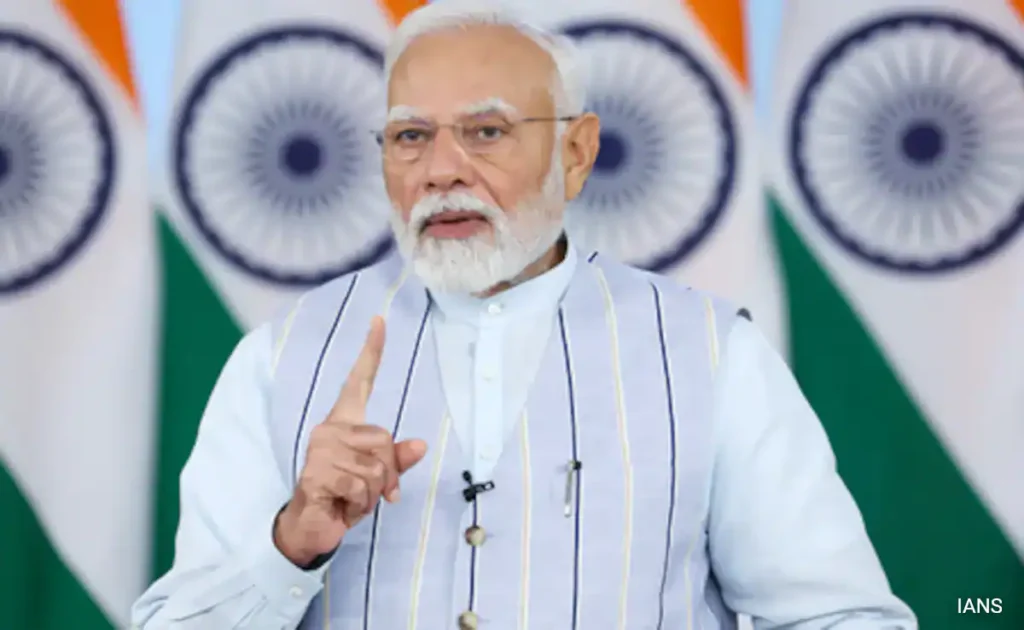
Published on: June 7, 2025
Category: International Relations | Indian Diplomacy | Indian Current Affairs
🌍 Introduction
In a significant diplomatic development, Prime Minister Narendra Modi is set to attend the upcoming G-7 Summit in Canada, scheduled for June 13–15, 2025. This visit marks a notable shift in the tone of India–Canada relations, which have seen strains in recent years over political and security issues. The G-7 Summit provides a platform for India to not only engage with global powers on pressing international concerns but also signal a thaw in its ties with Canada.
🏛️ What Is the G-7 Summit?
The Group of Seven (G-7) is an intergovernmental political forum consisting of Canada, France, Germany, Italy, Japan, the United Kingdom, and the United States. The European Union also participates. Together, these nations represent more than 50% of the global net wealth and are among the most influential democracies in the world.
India is not a member but has often been invited as a guest nation in recent years, reflecting its rising stature in global geopolitics. This year’s summit is being hosted in Vancouver, Canada, with the agenda centered on climate action, global security, economic recovery, AI regulation, and geopolitical stability.
🤝 A Diplomatic Reset with Canada
PM Modi’s decision to attend the summit in Canada comes after months of diplomatic frost, particularly following tensions in 2023–2024 over issues related to Khalistani separatism, trade barriers, and intelligence cooperation.
However, behind-the-scenes diplomacy and mutual strategic interests—particularly in the Indo-Pacific—have laid the groundwork for re-engagement. The 2025 G-7 Summit is now viewed as a critical opportunity to rebuild trust and revive diplomatic momentum between the two democracies.
🌐 Key Agendas for India at the G-7
1. Global South Representation
India is likely to champion the concerns of developing nations, focusing on equitable access to vaccines, green technologies, and development financing.
2. Climate and Energy Security
As a leader in renewable energy, India will push for more inclusive energy transition frameworks that do not compromise the developmental needs of the Global South.
3. AI and Tech Regulation
India’s expanding digital economy makes it a vital voice in global conversations on AI ethics, data sovereignty, and cybersecurity cooperation.
4. Strengthening Indo-Pacific Security
Given growing Chinese assertiveness, India will align with G-7 members on promoting a free and open Indo-Pacific, maritime security, and infrastructure collaboration.
🇮🇳 Domestic and International Significance
PM Modi’s presence at the summit is strategically timed ahead of upcoming bilateral meetings with global leaders, including U.S. President Joe Biden, French President Emmanuel Macron, and Canadian PM Justin Trudeau.
Back home, the visit will bolster India’s image as a responsible global player, reinforcing the government’s vision of Viksit Bharat 2047—a developed India on the world stage.
🗣️ What Experts Are Saying
Foreign policy analysts view this visit as a pragmatic step towards reviving India–Canada ties without compromising on core national interests. According to former diplomat Shivshankar Menon, “Re-engagement with Canada within a multilateral setting is a smart way to restart dialogue without immediate pressure.”
📢 Conclusion
PM Modi’s participation in the G-7 Summit 2025 marks not just another diplomatic appearance but a pivotal step in redefining India’s international posture. As global challenges become increasingly interconnected, India’s voice at platforms like the G-7 is indispensable.
➡️ Stay tuned to IndianCurrentAffairs.com for real-time updates, summit highlights, and expert analysis on India’s evolving role in global diplomacy.
-
World Oceans Day 2025: Date, Theme, Significance, and Major Threats

Published on: June 8, 2025
Category: Environment | Global Observance | Indian Current Affairs
🌍 Introduction: Celebrating Our Blue Planet
World Oceans Day 2025 is observed on Sunday, June 8, as part of a global initiative to highlight the vital role oceans play in sustaining life on Earth. It emphasizes the need for collective efforts in protecting marine biodiversity, supporting sustainable livelihoods, and combating the challenges faced by our oceans.
🧭 Theme for 2025: “Sustainable Fishing Means More…”
This year’s official theme, “Sustainable Fishing Means More…”, calls attention to the significance of responsible fishing practices. With over three billion people depending on oceans for their livelihood, sustainable fishing ensures long-term ecological balance and food security for future generations.
🐬 Why World Oceans Day Matters
✅ Climate Regulator
Oceans absorb around 30% of the CO₂ emitted by humans, significantly mitigating climate change effects.
✅ Oxygen Source
Marine plants, including phytoplankton, generate more than 50% of the planet’s oxygen.
✅ Economic Lifeline
Oceans contribute trillions to the global economy through shipping, tourism, fisheries, and offshore industries.
⚠️ Key Threats to Oceans in 2025
🌡️ 1. Climate Change & Ocean Warming
Rising sea temperatures lead to coral bleaching and disrupt marine food webs. The Indian Ocean, for example, is warming faster than global averages.
🐟 2. Overfishing
Nearly 90% of the world’s fish stocks are overexploited or depleted. Without regulation, fisheries may collapse within decades.
🧴 3. Plastic Pollution
Over 8 million tons of plastic enter the ocean every year. Microplastics are now found in seafood consumed by humans.
🏗️ 4. Habitat Destruction
Mangroves, coral reefs, and seagrasses are under constant threat from urbanization, tourism, and destructive fishing methods.
🇮🇳 India’s Efforts in Ocean Protection
India, with a coastline of more than 7,500 km, is implementing several initiatives:
- The Blue Economy Policy for sustainable development
- Swachh Sagar Abhiyan for beach cleanliness
- Ban on Single-Use Plastics to curb marine litter
- Collaborations with international forums to promote conservation technologies
🌐 Global Actions You Can Join
- Support eco-friendly brands and sustainable seafood
- Reduce plastic usage at home
- Join or organize beach cleanups
- Educate others about marine conservation
🏁 Conclusion: The Ocean is Our Shared Future
As the world unites to observe World Oceans Day 2025, it’s crucial to act — not just once a year but every day. The oceans give us life, and it’s time we give back by adopting ocean-friendly practices, pushing for policy reforms, and educating the next generation.
➡️ Stay tuned to IndianCurrentAffairs.com for real-time updates, environment features, and detailed coverage of global days like World Oceans Day.
-
Amit Shah Launches Bharatiya Bhasha Anubhag to Promote Indian Languages in Governance

Date: June 7, 2025
Category: Indian Governance | National Affairs | Language Policy
🗣️ Government Pushes for Multilingual Governance: A Landmark Step by Amit Shah
In a progressive move aimed at strengthening India’s cultural and linguistic heritage, Union Home Minister Amit Shah officially launched the Bharatiya Bhasha Anubhag (Indian Languages Division) in New Delhi. The initiative seeks to bring Indian languages to the forefront of administrative governance, reducing dependence on English and encouraging the use of native tongues in government communication and policy implementation.
This step is seen as a direct push to make governance more inclusive, accessible, and culturally rooted, particularly benefiting rural and non-English speaking populations.
🇮🇳 What is Bharatiya Bhasha Anubhag?
The Bharatiya Bhasha Anubhag is a government-backed section under the Ministry of Home Affairs that will promote the use of Indian languages in official work, including documentation, administration, and public interface.
Key Features:
- Translation of Documents: Instant translation between Indian languages for inter-departmental and inter-state communication.
- AI & Tech Support: Use of AI tools and language software to facilitate seamless multilingual governance.
- Policy Implementation: Language adoption in central and state policies to ensure broader participation and comprehension.
🌍 Why is This Move Significant?
India is home to 22 officially recognized languages under the Eighth Schedule of the Constitution and hundreds of dialects. However, English and Hindi have long dominated central governance. The new initiative aims to:
- Bridge linguistic divides between Centre and States
- Encourage state-level language inclusivity
- Promote regional identity and pride
- Enhance public service delivery in local languages
Speaking at the event, Amit Shah said:
“Language should never be a barrier to governance. With Bharatiya Bhasha Anubhag, we reaffirm our commitment to making administration people-centric.”
🎯 Link to National Education Policy (NEP) 2020
The initiative aligns closely with the National Education Policy 2020, which promotes the use of mother tongues as a medium of instruction. Bharatiya Bhasha Anubhag extends this policy to governance, suggesting a unified strategy for language empowerment across both education and administration.
📊 Impact on Governance & Public Communication
✅ Increased Accessibility
Non-English speakers across India will now find government documents and schemes easier to understand, increasing awareness and participation.
✅ Boost to Local Governance
State and local bodies will have better coordination with central ministries using native languages.
✅ Cultural Integration
This initiative is a significant step toward preserving India’s linguistic diversity while integrating it into modern administrative structures.
🔧 Technology as a Backbone
The government plans to collaborate with tech bodies like C-DAC (Centre for Development of Advanced Computing) to develop tools for:
- Real-time translation
- Speech-to-text conversion
- Language-standardized government portals
📌 What Comes Next?
The government will roll out multilingual interfaces for:
- e-Governance platforms
- Public utility websites
- Mobile apps for government services
Additionally, central training institutes will begin offering mandatory language training to bureaucrats to help them adapt to the multilingual framework.
📢 Final Thoughts
The launch of Bharatiya Bhasha Anubhag signals a major step toward inclusive governance in India. It redefines the role of regional languages in the administrative ecosystem, ensuring every Indian feels heard and understood, regardless of their linguistic background.
As India progresses toward becoming a global leader, this initiative reflects a belief that unity in diversity starts with communication in one’s own language.
-
India to Open Women’s Asia Cup Hockey 2025 Campaign Against Thailand

Published: June 7, 2025
Category: Indian Sports, Current Affairs, Women in Sports
🏑 Introduction: India Gears Up for Women’s Hockey Asia Cup 2025
India is all set to launch its campaign in the Women’s Hockey Asia Cup 2025 with an exciting opener against Thailand on September 5, 2025. The tournament, organized by the Asian Hockey Federation (AHF), is scheduled to be held at the Gongshu Canal Sports Park Hockey Field in Hangzhou, China, and will run until September 14.
This edition of the Women’s Asia Cup holds significant value as it acts as a qualifying tournament for the FIH Women’s Hockey World Cup 2026. The team that finishes at the top will earn a direct entry into the world’s most prestigious hockey event.
🌍 Overview of the Women’s Asia Cup 2025
- Host Country: China
- City: Hangzhou
- Dates: September 5 – 14, 2025
- Venue: Gongshu Canal Sports Park
- Number of Teams: 8
- Qualification: Winner qualifies for the FIH Women’s Hockey World Cup 2026
- Defending Champions: Japan
The tournament will witness participation from top Asian nations including India, Japan, China, South Korea, Malaysia, Thailand, Kazakhstan, and Singapore.
🇮🇳 India vs Thailand: The Opening Clash
India, ranked 7th in the world, will open its campaign against Thailand, a team that has consistently shown growth but has yet to pose a serious challenge to the top contenders. Historically, India has dominated matches against Thailand. Most recently, in the Asian Champions Trophy 2024, India secured a 13-0 victory with Deepika emerging as the star performer by scoring five goals.
India’s head coach emphasized the importance of starting strong in the tournament, saying:
“Momentum matters. A confident win in the first game sets the tone for the rest of the campaign.”
🌟 Key Players to Watch
1. Deepika
The young striker has become a household name in Indian hockey, especially after her five-goal performance against Thailand last year. Her agility, precision, and goal-scoring instinct make her a vital asset.
2. Salima Tete
An experienced midfielder, Salima is known for her quick turns and brilliant ball control. She’s expected to control the pace and distribution from the midfield.
3. Lalremsiami
A consistent forward with international exposure, Lalremsiami brings the X-factor to India’s attack. She’s also known for her leadership qualities on the field.
📈 India’s Recent Form in Women’s Hockey
India has shown commendable progress in women’s hockey over the past few years. The team reached the semifinals in the Tokyo Olympics 2020, and in recent regional tournaments, they’ve been dominant.
- Asian Champions Trophy 2024: India defeated Thailand 13-0
- Hockey5s Asia Cup 2023: India won the championship, beating Thailand 7-2
- Asian Champions Trophy 2023: India opened with a 7-1 win over Thailand
These performances indicate the team’s upward trajectory and readiness to secure a World Cup berth.
📺 Broadcast and Streaming
While the official broadcast partners are yet to be confirmed, it is expected that the matches will be streamed live on Hotstar, SonyLIV, and other leading sports platforms. Viewers can also follow updates via the official websites of Hockey India and the Asian Hockey Federation.
🏆 Road to the World Cup
The FIH Women’s Hockey World Cup 2026 will feature the best teams from around the globe. The Asia Cup 2025 provides a golden opportunity for India to qualify directly and avoid the grueling qualifying playoffs.
If India finishes as the winner or one of the top two teams (depending on allocation), they will seal their spot in the 2026 World Cup, adding another feather to the cap of India’s rapidly rising women’s sports ecosystem.
📰 Conclusion
India’s opening match against Thailand in the Women’s Hockey Asia Cup 2025 is more than just the first game — it’s a stepping stone toward global glory. With a talented squad, recent winning momentum, and strategic leadership, the Indian women’s hockey team is poised to make a powerful statement on the continental stage.
Stay tuned to IndianCurrentAffairs.com for real-time updates, match reports, and analysis of all key developments from the tournament.
-
Starlink Gets Green Light to Launch Satellite Internet in India
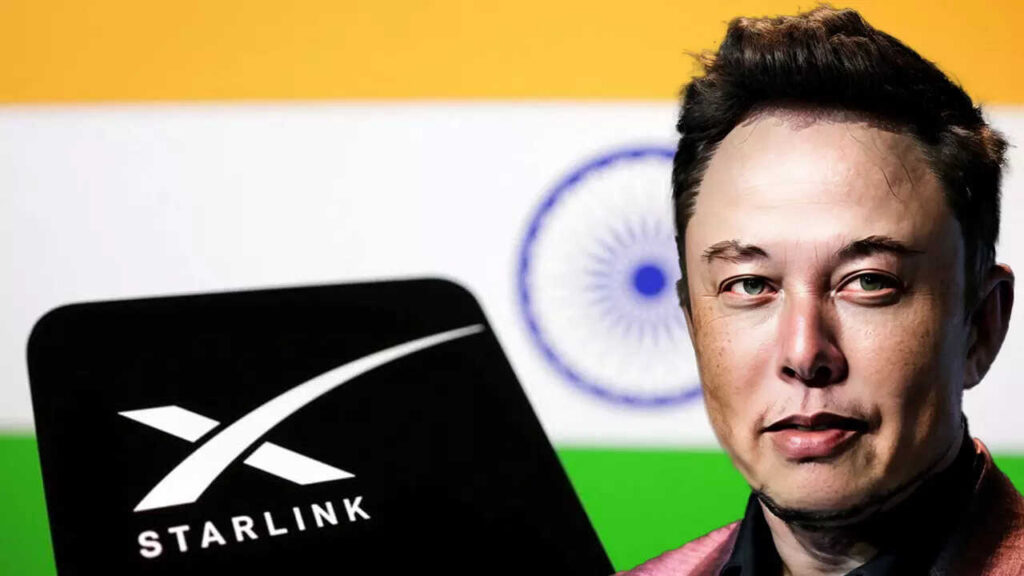
Date: June 7, 2025
Category: Indian Current Affairs, Technology, Telecom Sector
🌐 Introduction: A Major Leap in India’s Internet Connectivity
In a landmark decision, India has granted a license to Starlink, the satellite internet venture owned by Elon Musk’s SpaceX, to officially operate within its borders. This approval marks a significant step toward transforming internet accessibility in India, especially in rural and remote regions where broadband penetration remains low.
With this move, India joins a growing list of countries adopting Low Earth Orbit (LEO) satellite technology to bridge the digital divide. Starlink becomes the third satellite-based internet provider to receive permission after Reliance Jio’s JioSpaceFiber and Bharti Airtel-backed OneWeb.
🛰️ What is Starlink?
Starlink is a satellite internet constellation developed by SpaceX. It uses thousands of LEO satellites to provide high-speed, low-latency broadband to underserved areas across the globe. Unlike traditional internet infrastructure that relies on cables and towers, Starlink’s model offers near-global coverage via space-based infrastructure.
As of May 2025, Starlink has deployed over 6,700 satellites, serving millions of users across 70+ countries. With India’s go-ahead, the company is expected to extend its reach to the world’s most populous democracy.
🇮🇳 Why Starlink Matters for India
India has made major strides in digital inclusion in the past decade, yet over 40% of the rural population lacks stable internet access. While fiber optic and mobile networks are expanding, remote areas like Ladakh, Northeast India, and parts of central India still struggle with poor connectivity.
Here’s how Starlink can help:
- Last-Mile Connectivity: Starlink will provide seamless coverage in villages, hills, islands, and deserts where terrestrial infrastructure fails.
- Disaster Resilience: Satellite internet is more resilient during floods, cyclones, and earthquakes.
- Boost to Education & Healthcare: Improved internet will enable online learning, telemedicine, and e-governance in remote districts.
- Digital Economy Push: With better connectivity, rural areas can contribute to India’s digital economy vision and benefit from services like UPI, e-commerce, and telebanking.
📜 Conditions and Regulatory Compliance
Though Starlink has received an “in-principle” license, the Indian government has laid out strict preconditions for full operation:
- Data Localization: All data collected from Indian users must be stored within the country.
- Security Audits: The Department of Telecommunications (DoT) will review Starlink’s systems to ensure compliance with national security protocols.
- Local Infrastructure: Starlink must set up ground stations and network operation centers in India.
- Non-Auctioned Spectrum: The government is expected to allocate spectrum administratively, in line with global practices for satellite services.
Telecom Minister Jyotiraditya Scindia has affirmed that “security and strategic interests of the country will be protected,” and full rollout will be allowed only after all compliance measures are met.
💬 Public Reaction and Market Implications
The news has been met with enthusiasm in the tech and rural development communities. Many experts believe that Starlink’s entry will:
- Intensify competition in the satellite broadband market
- Lower internet prices in underserved areas
- Improve digital literacy in rural India
However, telecom operators have raised concerns over “unfair advantage” if spectrum is allocated without auctions. The Indian Space Association (ISpA) has also called for a level playing field between private and state-run players.
🔮 What’s Next for Starlink in India?
Starlink is now expected to:
- Begin beta testing in select rural districts by September 2025
- Partner with Indian resellers for customer acquisition and support
- Target 1 million users within the first 18 months of launch
A subscription is likely to cost between ₹1,500–₹2,000 per month, making it a premium service initially. However, with local manufacturing of terminals and policy incentives, prices may drop over time.
📌 Conclusion: A New Era in Indian Connectivity
Starlink’s license is more than just a business expansion—it’s a step toward transforming India’s digital inclusivity and infrastructure. If rolled out efficiently and securely, this initiative could place India among the top adopters of next-generation satellite internet, revolutionizing how millions connect, learn, and grow.
Stay tuned to IndianCurrentAffairs.com for real-time updates, match reports, and analysis of all key developments from the tournament.
-
PM Modi to Attend G7 Summit in Canada: A Positive Turn in India-Canada Relations
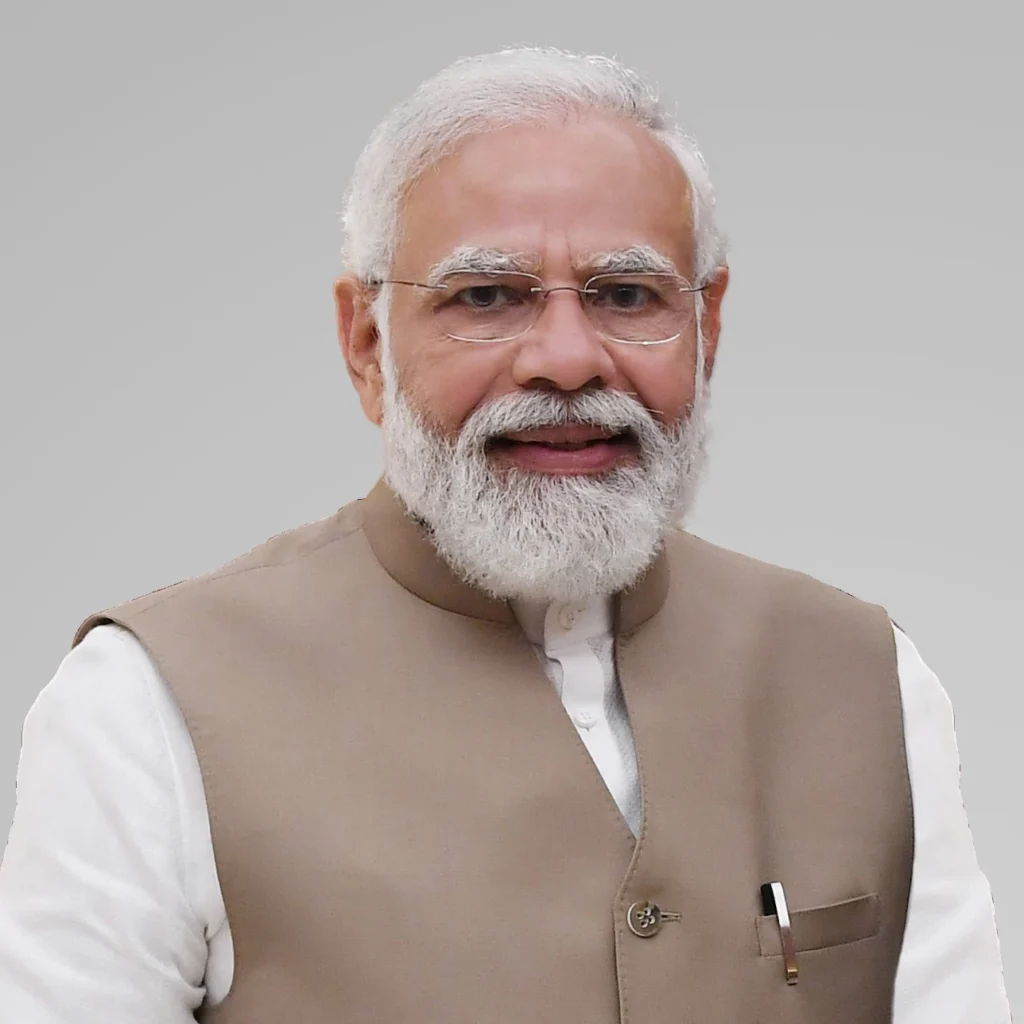
📰 Introduction: A Landmark Move in India-Canada Ties
In a significant diplomatic development, Indian Prime Minister Narendra Modi has confirmed his attendance at the G7 Summit in Canada, scheduled from June 15 to 17, 2025. The invitation, extended by Canadian Prime Minister Mark Carney, marks a possible thaw in the icy relations between the two nations that had reached a low point in recent years.
India’s participation in the G7 Summit, although not a member nation, highlights its growing global relevance and the willingness of Western nations to engage with it on critical issues such as climate change, artificial intelligence, and global security.
🌐 Background: India-Canada Tensions Since 2023
Relations between India and Canada became strained following the controversial assassination of Hardeep Singh Nijjar, a Canadian citizen and Sikh separatist leader, in June 2023. The Canadian government accused Indian operatives of being involved in the act, a claim India vehemently denied.
This resulted in a series of diplomatic retaliations:
- Expulsion of diplomats from both countries
- Temporary suspension of Indian visa services for Canadian citizens
- A chilling effect on trade talks and cultural exchanges
Despite these tensions, both nations maintained some level of back-channel communication. The G7 Summit invitation now provides an opportunity to reboot bilateral relations.
🇮🇳 India’s Ongoing Role in G7 Summits
Though India is not a formal member of the Group of Seven (G7), which includes Canada, the USA, the UK, Germany, France, Italy, and Japan, it has been regularly invited to participate in summit discussions since 2019.
India’s inclusion is driven by:
- Its rising influence in global politics
- Economic scale as the world’s fifth-largest economy
- Its strategic position in the Indo-Pacific region
- Leadership in climate action and digital governance
At the 2025 summit, India is expected to play a key role in discussions related to:
- Clean energy and sustainability
- Regulation of artificial intelligence
- Global supply chains and trade cooperation
- Peacekeeping and global security
🤝 Diplomacy at Work: Rebuilding Bridges
The move to invite PM Modi is seen as a calculated diplomatic step by Canada to rebuild trust and foster cooperation. In response, the Indian government has acknowledged the gesture and expressed hope that the summit will “open new doors for meaningful dialogue and practical collaboration.”
Indian officials also hinted that discussions may resume soon on the long-delayed Comprehensive Economic Partnership Agreement (CEPA) with Canada, which could significantly boost bilateral trade and investment.
🗣️ Mixed Reactions from Communities
The announcement has sparked mixed reactions:
- Business leaders and strategic analysts have welcomed the decision, calling it a pragmatic approach to reviving cooperation.
- However, some diaspora Sikh organizations in Canada have voiced concerns, accusing the government of overlooking alleged human rights issues.
Despite the criticism, public sentiment in both countries appears largely in favor of diplomatic re-engagement.
📊 What This Means for India
PM Modi’s participation in the G7 Summit offers multiple strategic advantages:
- Reasserts India’s status as a responsible global power
- Strengthens India’s voice in multilateral platforms
- Enhances opportunities for trade deals and foreign investments
- Opens diplomatic channels for resolving bilateral tensions
The summit also provides an opportunity to network with global leaders, including the US President, European counterparts, and Japan’s Prime Minister—further boosting India’s diplomatic capital.
📌 Conclusion: A Positive Step Forward
PM Modi’s visit to Canada for the G7 Summit 2025 is more than just a diplomatic gesture—it reflects a renewed willingness by both India and Canada to move beyond past conflicts and engage constructively on global issues. It also reinforces India’s importance on the world stage as a rising economic and geopolitical power.
As the summit unfolds, the world will closely watch how this diplomatic interaction reshapes the narrative between New Delhi and Ottawa, and what it means for global cooperation in an increasingly interconnected world.
Stay tuned to IndianCurrentAffairs.com for real-time updates, match reports, and analysis of all key developments from the tournament.
-
ADB Launches $10 Billion Urban Infrastructure Plan for India

🏙️ Major Boost to India’s Urban Development
The Asian Development Bank (ADB) has committed $10 billion over the next five years to support India’s urban infrastructure. This funding will aid in developing smarter, cleaner, and more efficient cities aligned with the government’s Viksit Bharat 2047 vision.
🚆 Focus on Transport and Basic Services
The plan includes large-scale investments in:
- Metro rail and Regional Rapid Transit Systems (RRTS)
- Affordable housing
- Water supply and sanitation systems
- Solid waste management
These upgrades aim to ease congestion, reduce pollution, and improve the overall quality of life in urban areas.
💡 Public-Private Partnership via Urban Challenge Fund
ADB’s initiative also features the Urban Challenge Fund, which encourages private sector participation through public-private partnerships (PPPs). This model will help bring in innovation, efficiency, and faster execution in urban development projects.
🏢 Strengthening Local Governance
ADB will provide technical assistance and training to state governments and urban local bodies to ensure effective planning and implementation. The goal is to create sustainable systems and boost the capabilities of urban authorities.
🌏 Why It Matters
With over 40% of India’s population projected to live in urban areas by 2030, the pressure on city infrastructure is immense. This investment is timely and critical for transforming India’s urban landscape into one that is inclusive, future-ready, and climate-resilient.
Stay Tuned with Indiancurrentaffairs.com for more real time updates.
-
Mahendra Gurjar Sets World Record in Javelin at Para Athletics Grand Prix in Switzerland

ndia’s Mahendra Gurjar created history at the Nottwil World Para Athletics Grand Prix in Switzerland by setting a new world record of 61.17 meters in the men’s javelin F42 category. His third attempt outshined his previous throws of 56.11m and 55.51m, and he went on to deliver three more impressive throws: 58.54m, 57.54m, and 58.07m.
Breaking a Long-Standing Record
Gurjar broke the earlier world record of 59.19 meters, which was set by Brazil’s Roberto Floriani Edenilson in 2022. The F42 category includes athletes with moderate movement impairments in one leg and is part of field events like javelin and long jump.
Gold Medal in a Combined Event
Although the event featured multiple categories like F40, F57, F63, and F64, Gurjar emerged as the gold medalist in the F42 classification, thanks to his record-breaking performance.
Second Gold in Long Jump Debut
Adding to his success, Gurjar also won gold in the long jump T42 category with a 5.59-meter jump. This was his first time competing in long jump, and with this victory, he became the number one ranked long jumper in Asia in his category.
F42 Category Excluded from Major Events
Despite his achievements, Gurjar won’t compete in the 2024 Paris Paralympics or the 2023 Hangzhou Asian Para Games as the F42 category is not included in either event.
Sumit Antil Shines with Gold in F64 Javelin
Fellow Indian athlete Sumit Antil also won gold, achieving a 72.35-meter throw in the men’s javelin F64 category, which is for athletes with leg impairments or limb differences. His performance added to India’s medal tally and global recognition in para sports.
-
Shubman Gill Becomes Brand Ambassador for Oakley!

India’s new Test captain, Shubman Gill, has added more style to his cricketing persona by becoming the brand ambassador for Oakley, a global leader in performance eyewear. This collaboration comes as part of Oakley’s futuristic new campaign, “Artifacts from the Future.”
🔹 Why Shubman Gill?
At just 25, Gill’s elegant batting, calm mindset, and consistent performances have made him a youth icon. Oakley chose him for his passion, performance, and progress—qualities the brand stands for.🔹 Shubman’s Take
Gill said he’s thrilled to represent Oakley, a brand that has always been part of his cricketing journey. He believes Oakley reflects his dreams, discipline, and determination.🔹 Oakley’s Message
Sahil Jindal, Senior Brand Business Manager at Oakley, praised Gill’s never-give-up attitude and said he perfectly reflects the spirit of Oakley’s athletic vision.🔹 Global Sports Icons with Oakley
Gill joins a legendary Oakley lineup featuring:- ⚽ Kylian Mbappe
- 🏀 Damian Lillard
- 🏈 Patrick Mahomes II
🔹 About the Campaign – “Artifacts from the Future”
Celebrating 50 years of Oakley, the campaign unveils futuristic styles like Plantaris, Lateralis, and Masseter—blending nostalgia and innovation in eyewear. The collection launched in May 2025.
-
Hitachi India appoints N Venu as Managing Director, effective June 2, 2025

Effective June 2, 2025, Mr. N Venu will become the new Managing Director (MD) of Hitachi India.
This follows the promotion of Mr. Bharat Kaushal—the first Indian MD of Hitachi India—who will step into the role of Executive Chairman starting April 1, 2025.🔹 About N Venu
- Currently MD & CEO of Hitachi Energy India
- Also Region Head – South Asia, Hitachi Energy
- Brings nearly 40 years of industry experience
- Alumni of NIT Warangal, IIM Ahmedabad, ISB Hyderabad, and IMD Switzerland
🔹 His New Focus as MD
- Drive growth through Hitachi’s Inspire 2027 vision
- Lead innovation and digital transformation
- Unite 28+ Hitachi group companies in India for value creation
- Expand footprint in railways, energy, fintech, digital services, healthcare, and education
🔹 Message from Bharat Kaushal
“Venu’s appointment reflects Hitachi’s strong commitment to India’s growth and our global strategy.”
-
PM Modi Inaugurates 103 Redeveloped Railway Stations Under Amrit Bharat Scheme

Prime Minister Narendra Modi inaugurated 103 redeveloped railway stations across the country under the Amrit Bharat Station Scheme (ABSS). These stations are upgraded with modern amenities, enhancing the passenger experience and connectivity. It’s a significant development for infrastructure, urban planning, and government initiatives.
-
Waqf (Amendment) Act, 2025 Passed with Significant Changes

The Indian government passed the Waqf (Amendment) Act, 2025, introducing significant changes like including non-Muslim members in Waqf Boards and empowering district collectors on disputed properties. This act aims to reform Waqf property management, sparking debates on its constitutional validity and impact on minority rights. It’s important for legal reforms, governance, and minority affairs.
-
Wheat Procurement Surges in India, Surpassing Previous Year’s Figures

India has procured 25.6 million metric tons of wheat from domestic farmers as of May 1, 2025, surpassing last year’s figures and aiming for 31.2 million metric tons. This surge supports the government’s efforts to stabilise the domestic food supply and provide support to farmers. It’s relevant for agriculture, food security, and economic policy.
-
India Announces Caste Census Inclusion in Forthcoming Population Census
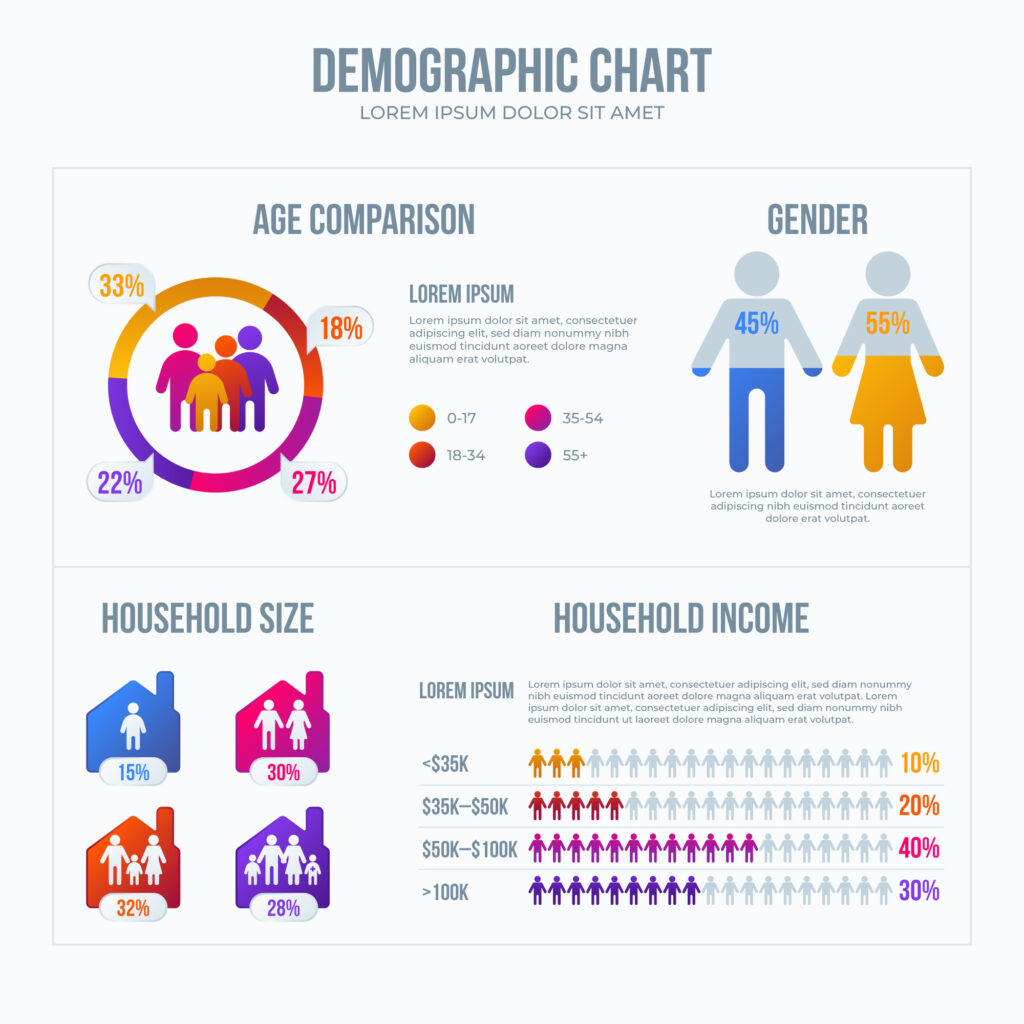
In a landmark decision, the Indian government has announced the inclusion of caste data in the forthcoming population census, the first such move in over a century. This initiative aims to provide updated demographic data for targeted policy-making and social justice initiatives. It’s important for social policy, demography, and governance.
-
India Suspends Indus Water Treaty Participation with Pakistan Amid Tensions
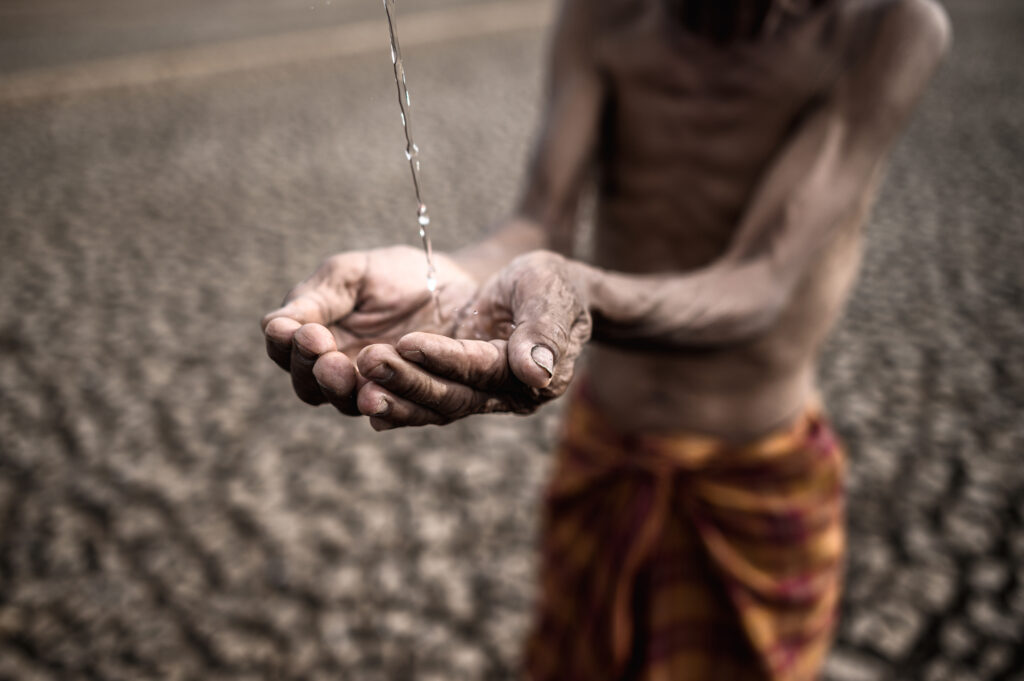
India has suspended its participation in the Indus Water Treaty with Pakistan following a militant attack in Kashmir, escalating bilateral tensions. This unprecedented move signifies a diplomatic hardening over cross-border terrorism and water resource management. It’s critical for India-Pakistan relations and regional security.
